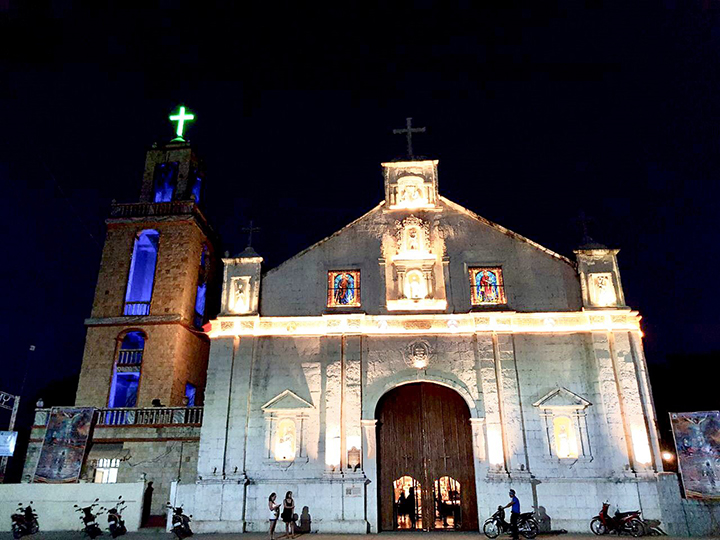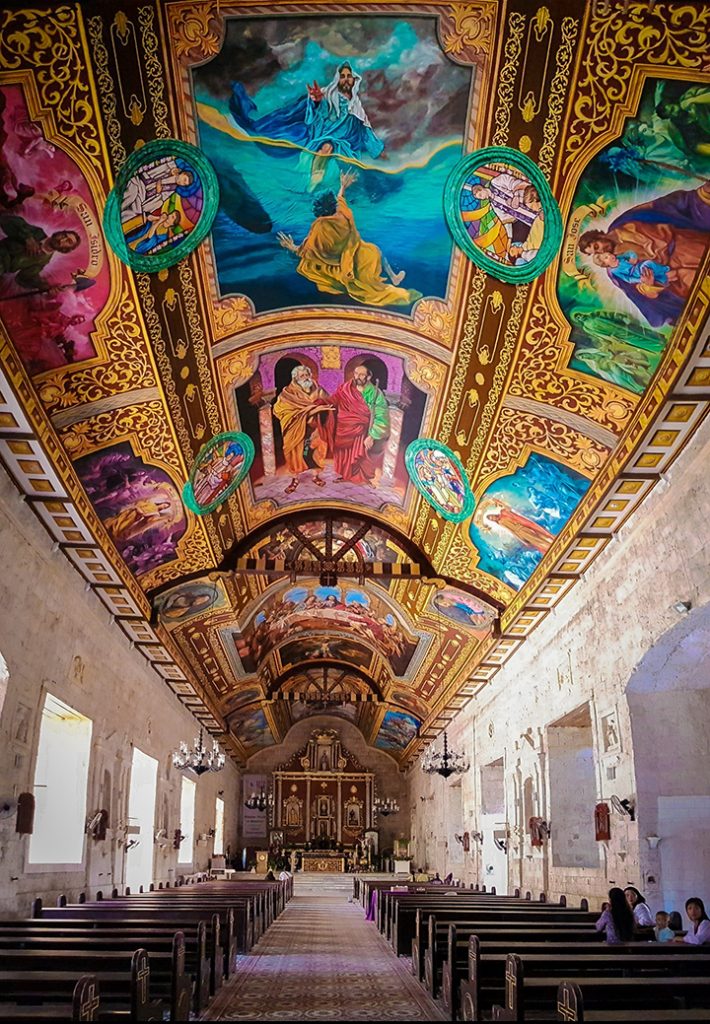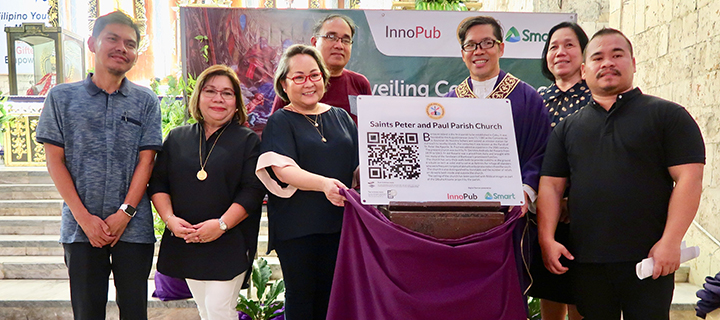The Saints Peter and Paul Church stands tall in the four-centuries-old parish of Bantayan, the first Christian community established in Cebu. Built in the 1800s, the church has served not only as a place of worship but also a refuge for residents during pirate incursions.

Keeping up with the times, the parish marks another milestone this year as it adopts a digital tourism initiative in partnership with PLDT wireless unit Smart Communications.
Representatives of the Bantayan parish, Saints Peter and Paul Church, Cebu Archdiocesan Commission for the Cultural Heritage of the Church, Smart, and InnoPub Media recently unveiled the tourism quick-response (QR) codes installed at the church’s facade.
Using their phones’ camera or third-party apps, locals and visitors can scan these QR codes, which will open to a new browser link that contains information about the parish, the church, and the mural on its ceiling.

Smart Visayas-Mindanao public affairs head Maria Jane Paredes said the project is an important initiative in the parish’s faith tourism program and is relevant not just for Bantayan Island but for the entire Philippines as well. “We believe that through the digitalization of evangelization, we can help reach more people. Smart is proud to be a part of this timely project, as we look forward to celebrating 500 years of Christianity in 2021,” Paredes said.
Smart also turned over cash donation to parish priest Fr. Joselito Danao and the Dibuho Kisame artists group for the ongoing painting of the ceiling.
In 2018, the parish church’s bare ceiling was transformed into a visual Biblical spectacle with the Dibuho Sa Kisame. The ceiling painting illustrates in great detail the Creation, Fall of Man, and Redemption, along with images of various patron saints. It also weaves the story of how the parish and a group of talented artists came together to undertake a momentous project.

One of the oldest settlements in Cebu, Bantayan was populated by people from Samar and Leyte who were attracted to the bounty of fish in the area. Bantayan was said to be a raiding target because it was flat and heavily populated, which made it easy for pirates to get captives.
The parish church is distinguished by its thick walls and is embellished with reliefs of angels and saints. Within its compound is the parish museum, which features religious artifacts unearthed from the centuries-old church.
The historic items include a copy of a Papal indult obtained in 1843 allowing Bantayan parishioners to eat meat on days of fasting and obligation if they perform acts of penance and works of charity. Fr. Danao has pointed out that the indult has long expired.

This trivia-and more-is the kind of information that the parish wants the locals and visitors to be interested in, according to Fr. Danao. “This digital program is very beneficial to the parish because technology is now prevalent in our society. Through this initiative, we hope to evangelize more people,” said Fr. Danao. “We thank Smart for the digital contribution that they introduced to this island,” he added.
Apart from the QR codes, Danao said the painting on the church’s ceiling would make it easier for him to explain to the parishioners about faith and redemption. “Through this mural, we also hope people would understand the profound mystery and love of God. Because of this love we continue to hope, in spite of difficulties and trials in our life. We continue to stand for what is good, and that is hope,” he said.
Liked this post? Follow SwirlingOverCoffee on Facebook, YouTube, and Instagram.


